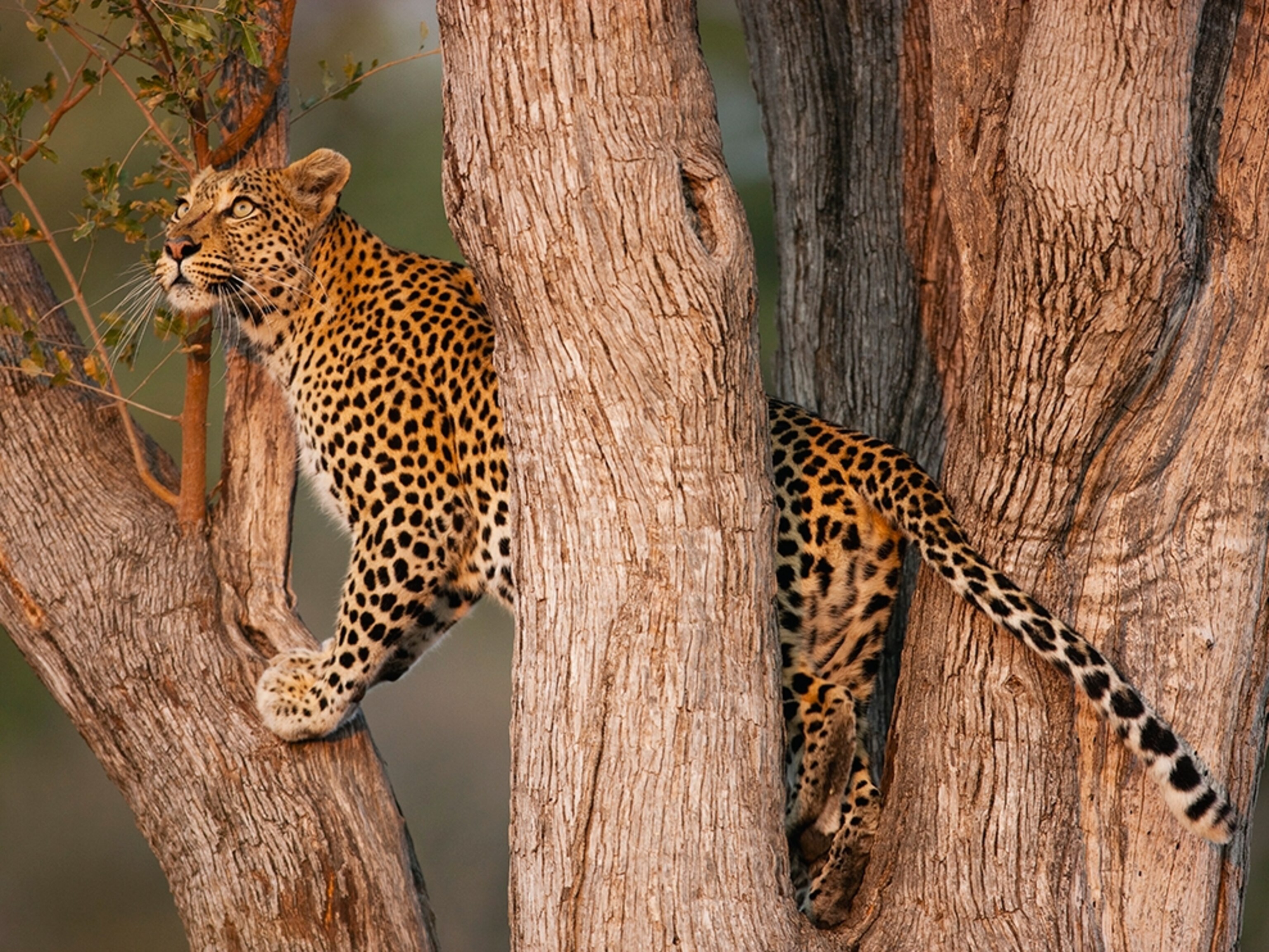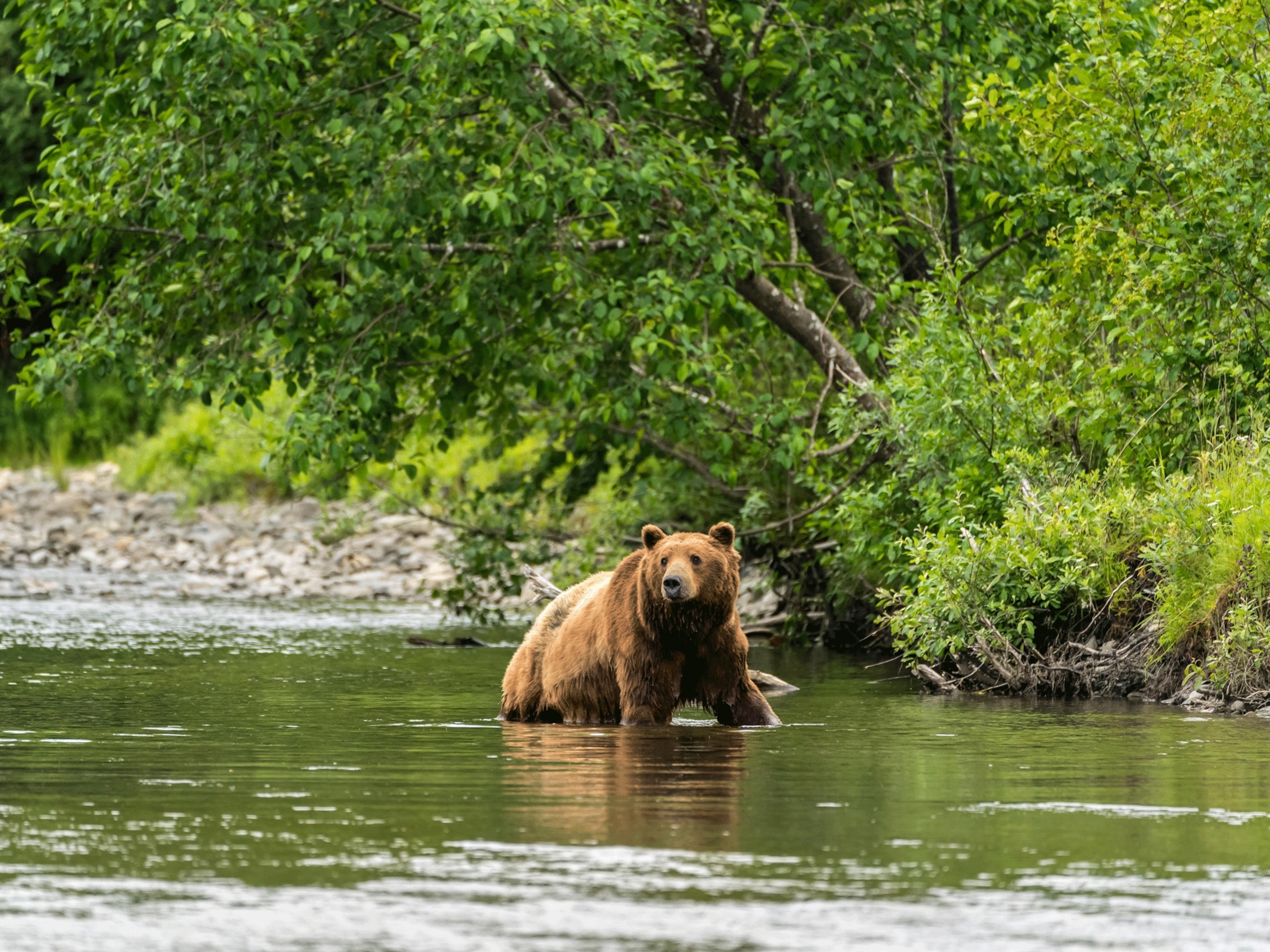
What I learned investigating the wildlife tourism industry
I traveled the world documenting unseen suffering. Here’s what you can do to respect animals during your travels.
Right away, Elephant Valley Thailand felt different. The property, nestled in the forest on the outskirts of Chiang Rai, a small city in northern Thailand, was the fifth elephant attraction I’d visited in a week. I’d seen shows where elephants kicked soccer balls and twirled hula hoops. I’d watched people ride on their backs and swing from their trunks. I’d peeked into the stalls to which elephants returned after working, where they’re chained by their ankles to posts.
But Elephant Valley was quiet. It was the first time all week that I’d seen elephants from a distance. One was bathing in a pond, alone. Another two were eating in the middle of a field. Wooden fences surrounded most of the fields—to keep us out, not them in, John Lee, a manager at Elephant Valley, told me. That’s what struck me most: No one was allowed to touch the animals. These were elephants being elephants. (Here's why we're shining a light on wildlife tourism.)

Elephant Valley Thailand, home to five elephants that previously worked in trekking camps and the logging industry, is unlike most other elephant attractions in Thailand. Many of the country’s 3,800 captive elephants live in camps that offer up-close, interactive experiences that allow visitors to ride or bathe the animals or watch them perform in shows. The activities are a massive draw for travelers from around the world, part of a lucrative global industry that puts people together with exotic animals for once-in-a-lifetime encounters.
It’s what brought me to Thailand, a monthlong stop on a reporting trip for National Geographic magazine that took photographer Kirsten Luce and me to four continents over a year and a half. Our goal was simple: to look at the animals that entertain us and the people who seek them out. Those people are you and they’re me. I have a photo of myself at two years old, perched on an elephant’s back at a zoo in my hometown of Toronto, Canada. Eight years ago, on my honeymoon, I went swimming with captive manta rays in Mexico. But seven years later, while reporting the story, I found myself watching a group of tourists pass around a tiger cub after paying a couple of dollars to feed him a bottle of milk—and wondering if anyone else was questioning why he wasn’t with his mom.
It’s complicated. People love animals and naturally want to get close to them—and genuinely want to learn more about them too. It’s a desire that’s increasingly fueled by social media, where travelers share their experiences instantaneously. The reality that many tourists don’t see is that to stay in business, elephant interactions—and photo ops with tigers and swimming with manta rays—rely on a steady stream of working wild animals, all of which have been caught or bred or trained into submission.
And it’s all too easy to misread signs of suffering. Captive elephants sway their trunks back and forth—almost as if they’re dancing. In reality, it’s a sign of psychological distress. Sloths seem to love cuddling, but their hug is really just an attempt to cling to what feels to them like a tree trunk. Dolphins appear to be smiling but that’s the natural set of their mouths.
Travelers are increasingly recognizing that many animal tourist attractions may not be ethical. More and more backpackers are shunning elephant riding. (Follow these tips for ethical animal encounters.)
The industry knows it. Dozens of properties in Thailand now call themselves “sanctuaries.” Many look a lot like Elephant Valley and boast five-star ratings on travel sites such as TripAdvisor. But Kirsten and I found that, unlike Elephant Valley, almost every one offers elephant bathing for visitors who wish to splash with an elephant in a river or mud pit. Often the bathing is repeated all day long. And only trained elephants will submit to baths.
Jack Highwood opened Elephant Valley in 2016. The 40-acre property is his second elephant sanctuary, following a much bigger one he established in Cambodia. He chose to go small with the Thai sanctuary, installing inexpensive wooden fencing and minimal infrastructure because he wanted to make the model as easy as possible for others to copy. It felt peaceful, several visitors at Elephant Valley told me. As if the elephants didn’t even know they were there.
While traveling the world, I spoke to tourists everywhere. In restaurants and hostels. At aquariums and monkey shows. I would often ask people if they prefer to have an up-close experience with an animal in captivity or observe it from afar in the wild. More often than not, they told me the latter. Yet captive encounters remain extremely popular. Maybe because an animal sighting is assured. Maybe because the animals seem happy, and it seems that your admission fee is going to contribute to someone’s paycheck. Maybe, perhaps most compelling of all, because it gives you a photograph—you, together with an exotic animal—that can go straight to your social media feed, where likes and comments are guaranteed.
Across the Pacific, on the North Shore of Oahu, in Hawaii, there’s a beach called Laniakea. People more commonly call it Turtle Beach, because sea turtles regularly come ashore. They’ll pick a spot and sleep in the sun, sometimes for hours at a time. Volunteers are there every day to keep people away from the animals. When a turtle emerges from the sea, the volunteers block off space for it with rope, giving the turtle ample room to relax in peace.
One weekday in September, I sat with dozens of tourists behind the rope and watched them watching a turtle. For the most part, people were respectful. A few asked why they couldn’t touch. It’s illegal to touch sea turtles in Hawaii, the volunteers explained. And it’s important to respect their space, they added. This is their beach too, after all.
It can be hard for most people to tell the difference between ethical and problematic wildlife experiences. There are many shades of gray. But you might follow a few simple guidelines:
Keep your distance. Seek experiences that offer observation of animals engaging in natural behaviors in natural environments.
Do your research. A highly rated place may not necessarily be humane. Read those one- and two-star reviews. It’s often in the pans that visitors chronicle animal welfare concerns.
Beware of buzzwords. A facility may use phrases on their website or promotional materials such as “gives back to conservation,” “rescue,” and “sanctuary,” but if it still offers extensive interaction, that may be a red flag.
Wildlife Watch is an investigative reporting project between National Geographic Society and National Geographic Partners focusing on wildlife exploitation. Read more Wildlife Watch stories here, and learn more about National Geographic Society’s nonprofit mission at nationalgeographic.org. Send tips, feedback, and story ideas to ngwildlife@natgeo.com.
You May Also Like
Go Further
Animals
- This ‘saber-toothed’ salmon wasn’t quite what we thoughtThis ‘saber-toothed’ salmon wasn’t quite what we thought
- Why this rhino-zebra friendship makes perfect senseWhy this rhino-zebra friendship makes perfect sense
- When did bioluminescence evolve? It’s older than we thought.When did bioluminescence evolve? It’s older than we thought.
- Soy, skim … spider. Are any of these technically milk?Soy, skim … spider. Are any of these technically milk?
- This pristine piece of the Amazon shows nature’s resilienceThis pristine piece of the Amazon shows nature’s resilience
Environment
- This pristine piece of the Amazon shows nature’s resilienceThis pristine piece of the Amazon shows nature’s resilience
- Listen to 30 years of climate change transformed into haunting musicListen to 30 years of climate change transformed into haunting music
- This ancient society tried to stop El Niño—with child sacrificeThis ancient society tried to stop El Niño—with child sacrifice
- U.S. plans to clean its drinking water. What does that mean?U.S. plans to clean its drinking water. What does that mean?
History & Culture
- Séances at the White House? Why these first ladies turned to the occultSéances at the White House? Why these first ladies turned to the occult
- Gambling is everywhere now. When is that a problem?Gambling is everywhere now. When is that a problem?
- Beauty is pain—at least it was in 17th-century SpainBeauty is pain—at least it was in 17th-century Spain
- The real spies who inspired ‘The Ministry of Ungentlemanly Warfare’The real spies who inspired ‘The Ministry of Ungentlemanly Warfare’
- Heard of Zoroastrianism? The religion still has fervent followersHeard of Zoroastrianism? The religion still has fervent followers
Science
- Here's how astronomers found one of the rarest phenomenons in spaceHere's how astronomers found one of the rarest phenomenons in space
- Not an extrovert or introvert? There’s a word for that.Not an extrovert or introvert? There’s a word for that.
- NASA has a plan to clean up space junk—but is going green enough?NASA has a plan to clean up space junk—but is going green enough?
- Soy, skim … spider. Are any of these technically milk?Soy, skim … spider. Are any of these technically milk?
- Can aspirin help protect against colorectal cancers?Can aspirin help protect against colorectal cancers?
Travel
- What it's like to hike the Camino del Mayab in MexicoWhat it's like to hike the Camino del Mayab in Mexico
- Follow in the footsteps of Robin Hood in Sherwood ForestFollow in the footsteps of Robin Hood in Sherwood Forest
- This chef is taking Indian cuisine in a bold new directionThis chef is taking Indian cuisine in a bold new direction
- On the path of Latin America's greatest wildlife migrationOn the path of Latin America's greatest wildlife migration
- Everything you need to know about Everglades National ParkEverything you need to know about Everglades National Park
















